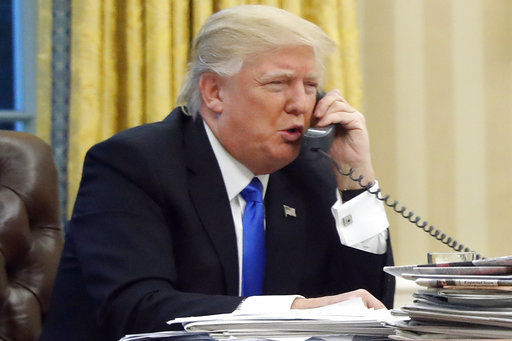In case you haven’t figured it out yet, there will be no wall built along the length of the Mexican border.
And of course, there being no wall, Mexico won’t pay for it.
That much became clear last week with the publication of a leaked transcript of a call between President Trump and Mexican President Enrique Peña Nieto. The call occurred in January, but it showed Trump long ago knew the idea was less of a proposal than a political tactic — something to cynically keep his supporters fired up.
“You cannot say anymore that the United States is going to pay for the wall,” Trump beseeched Peña Nieto. “I am just going to say that we are working it out. Believe it or not, this is the least important thing that we are talking about, but politically this might be the most important (thing to) talk about.”
A few members of Congress might still believe in Trump’s “big, beautiful wall” — last week House Speaker Paul Ryan hilariously tried to jump on the caboose of the border-wall train just as it went off the tracks. But most have left the idea behind — even Republicans from border states.
Take the comments of John Cornyn, a U.S. senator from Texas, when he introduced a border security bill last week that would spread money across a variety of border-security pursuits but didn’t throw much cash after fences.
“There are parts of our border in which it makes absolutely no sense,” Cornyn, the No. 2 Republican in the Senate, told a San Antonio TV station. “But what is helpful (is) to have fencing, for example, in places like San Diego, it’s a large urban area.”
Or consider the position of all of the members of the U.S. House representing districts along the Mexican border: None of them, Democrats or Republicans, want a wall across the length of the border. They recognize the waste of money that would be and prefer smarter security strategies.
Rep. Martha McSally put out a press release July 27 celebrating the highlights of the defense authorization bill the House had passed, highlights that included, for example, $1.2 billion allocated to the Bureau of Reclamation. The Tucson Republican didn’t even mention the $1.6 billion included in the bill for certain stretches of border barrier.
McSally, instead, recently held a hearing on other technological solutions to the border-security problem.
Even the National Border Patrol Council, the union for border agents that crucially supported Trump’s campaign for president, doesn’t support building border-long walls and barriers, in part because they have to be manned to be of any use.
“The NBPC disagrees with wasting taxpayer money on building fences and walls along the border as a means of curtailing illegal entries into the United States,” the union says on its website. “Walls and fences are only a speed bump. People who want to come to the United States to obtain employment will continue to go over, under, and around the walls and fences that are constructed.”
Nobody except a few million hardcore Trump supporters still seem to believe the border wall is a good idea and that Mexico might pay for it.
Now we know that Trump doesn’t even believe in the idea. He acknowledged in the call with Peña Nieto that a border wall paid for by Mexico was always just a toss-off line. And it had trapped him.
“The only thing I will ask you though is on the wall, you and I both have a political problem,” Trump said. “My people stand up and say, ‘Mexico will pay for the wall,’ and your people probably say something in a similar but slightly different language. But the fact is we are both in a little bit of a political bind because I have to have Mexico pay for the wall — I have to.”
Later, Peña Nieto suggests, “Let us stop talking about the wall. I have recognized the right of any government to protect its borders as it deems necessary and convenient. But my position has been and will continue to be very firm saying that Mexico cannot pay for that wall.”
Almost pitifully, Trump replied, “But you cannot say that to the press. The press is going to go with that and I cannot live with that. You cannot say that to the press because I cannot negotiate under those circumstances.”
The fact is, Trump’s ability to negotiate a border wall with Congress had highly deteriorated even before the Washington Post published the leaked transcript Thursday. Now the prospects of a wall, and of Mexico paying for it, are gone, whether Trump’s hardcore supporters know it or not.
And no matter what Paul Ryan says. With unerring bad timing, the House Speaker put out a flashy video on Tuesday proclaiming, “It’s time for the wall.”
He was exactly wrong. Last week was the time when the idea of the wall collapsed, thank goodness. Now we can leave it behind and move on to more pragmatic ideas for border security.




